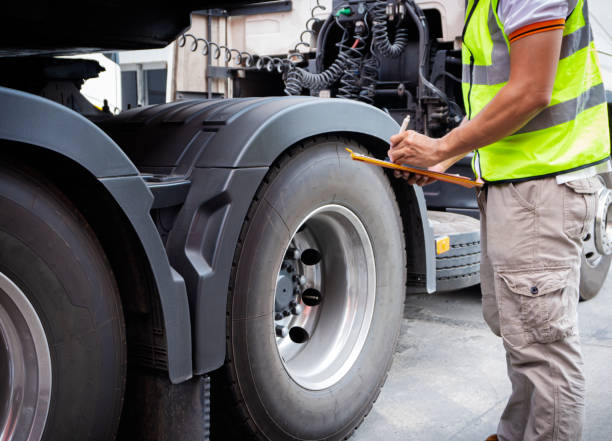You’re riding down the road on your motorcycle with the wind blowing through your hair. Nothing can take away this exhilarating feeling. Nothing except for falling off your bike.
If you don’t wear a motorcycle helmet, you can get seriously injured or worse. That doesn’t mean you can slap on any old head covering and call it a day. It needs to fit you properly, or it won’t work.
There’s a lot more that goes into sizing than you may think. We can help you choose a helmet that looks good, is comfortable, and will keep your head safe. Keep reading to learn more.
Contents
Pick Your Helmet Style
When it comes to the types of helmets, you have your pick. We will warn you that each kind will fit your head a little differently. That’s why choosing your style is the first step in finding the right size head covering.
Full-Face
As the name suggests, full-face helmets cover your entire head. It will protect your face against collisions, and you won’t have to worry about getting pelted by the elements.
As far as ventilation goes, it depends on the model. Some will simulate that wind through your hair feeling, and others provide very little ventilation at all.
Since they cover your entire head, they can get a little bit warm during the hot summer months. You might have issues wearing one if you’re claustrophobic as well.
Open-Face
If you’re strapped for cash, the open-face helmet might work best for you. It doesn’t have anything in place to protect your face if you fall off your bike, but it will keep your skull intact.
They let plenty of air through, so they don’t get as hot in the summer. They come in both a half and a three-quarter model. One only protects your skull and the other covers everything but your face.
Wearing either one will make you feel a little less claustrophobic than full-face helmets. You can visit link to pick one up.
Modular
If you want to take advantage of the benefits of both open-face and full-face helmets, grab a modular one. It comes with a shield that will keep bugs out of your face while you drive.
With the press of a button, you can lift this shield and convert your helmet into an open-face model. They’re most likely the heaviest motorcycle helmet style, but they get the job done.
ADV
Do you tend to take your bike into the dirt about as often as you hit the road? An ADV helmet will have you covered. It combines the design elements of both street and dirt helmets.
Since it’s a hybrid, it might not offer quite as much protection as a full-face helmet, but it meets all the required safety ratings, so it can’t be that bad.
Figuring Out Your Head Shape
Now that you’ve chosen a helmet, it’s time to figure out your head shape. Most people fall into one of three categories: round oval, intermediate oval, and long oval.
Intermediate oval is the most common shape. It measures a little longer from back to front. Long ovals work the same way, except they’re about half an inch longer than that.
With round ovals, the measurement you get from side to side will be about the same as your back to front measurement. There are a couple of ways you can figure out your shape.
Take a Picture
Have a friend take a top-down picture of your head. Before they snap the pic, do what you can to flatten your hair down as much as possible. If you don’t, it will be hard for you to see the results.
Of course, this will tell you what helmet shape you need to get. As far as size goes, you’ll have to measure your head.
Measuring Your Head
You’ll need a friend for this method as well. Ask them to wrap a cloth tape measure around the circumference of your head. They should place it above your eyebrows and run it toward the back of your skull.
Once you get these numbers, there are charts you can look up online. Compare the numbers to figure out what size helmet you need to pick up.
Try Before You Buy
Again every helmet style fits a little differently, so you can’t even trust your size. It’s a good jumping-off point, but you need to try on the head covering before you buy it.
It’s not going to be comfortable at first. Do you know how you have to adjust your sock after putting on a shoe? You have to do the same with your helmet.
It will wear on your ears in a strange way, and the padding on the inside is never going to be comfortable at first. A problem only arises when it’s painful after wearing it for several hours.
Wear the Helmet for a While
You won’t be able to judge how well a motorcycle helmet fits you unless you wear it for a while. Turn on your TV and watch your favorite show or cook dinner with your head covering on.
If it’s a little tight, that’s natural. What you shouldn’t feel is pain. If it hurts because it’s pressing down too hard on various points on your head, it’s not the right head covering for you.
The Only Motorcycle Helmet Sizing Guide You’ll Ever Need
Before you hop on a bike, you’ve got to pick up a motorcycle helmet. Riding down the road without one is dangerous and illegal in some states.
The annoying part is finding one that fits. If the head covering is too loose or fits too tightly, it’s not going to provide the right amount of protection. We hope that you’re able to use this sizing guide to find the right helmet for you.
Are you looking for additional ways to stay safe while riding a motorcycle? We’ve got you covered. Check out the Auto section of our blog to learn more.



